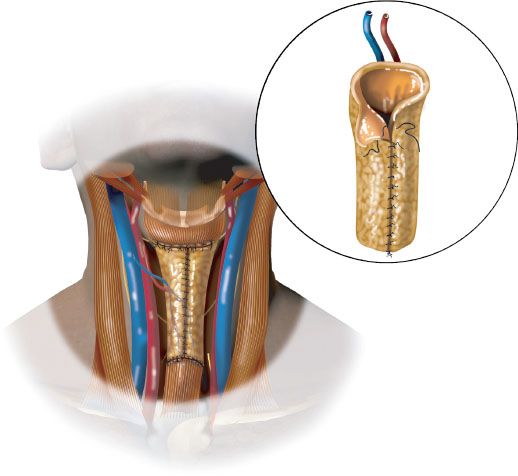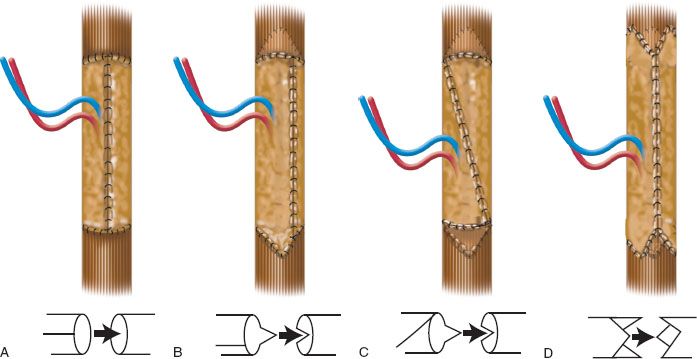FIGURE 32.1 After laryngectomy. Note anastomosis suture lines may be oriented anteriorly or posteriorly, as long as potential leak areas are away from the vascular pedicle.

FIGURE 32.2 Radial forearm flap sutured in tubed technique (salivary bypass tube may be used, unless larynx remains intact).

FIGURE 32.3 A. Standard circumferential inset may result in contraction and stricture proximally and distally. B. Dart modification for stricture prevention. C. Oblique/twisted flap orientation, with dart modification. D. Running Z-plasty/triple dart type modification.
POSTOPERATIVE MANAGEMENT
Postoperative care of the patient is relatively straightforward with standard flap monitoring protocols using the Doppler pen, and an external skin paddle if used. The duration of NPO status varies depending on the patient and reconstruction with longer periods indicated on a patient with a history of preoperative radiotherapy. Approximately 7 to 10 days is generally appropriate prior to obtaining a postoperative esophagram to verify that there is no anastomotic leak. If negative, a clear liquid diet may be instituted and advanced as tolerated to a soft diet. The nasogastric tube may now be removed.
COMPLICATIONS
Stay updated, free articles. Join our Telegram channel

Full access? Get Clinical Tree


